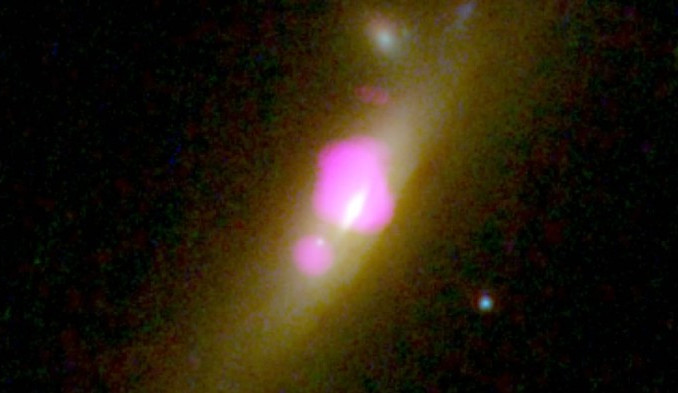Star 'starving' black hole is a billion light years from Earth
American astrophysicists discovered that a "super-thin" black hole has no surrounding stars, a phenomenon that is rarer than the two black holes.
According to Phys.org, Julie Comerford researcher at the University of Colorado announced the discovery during the annual meeting of the American Astrophysics Association on January 5 in Kissimmee, Florida.
Until now, scientists have only discovered 12 galaxies exist with two black holes in the middle. Typically, galaxies have a supermassive black hole located in the center with a mass of between one million and a billion times that of the Sun.

Smaller black holes have no stars around.(Photo: NASA).
However, in newly discovered galaxies, one of the two black holes is much smaller than the remaining black hole and is in a "starving" state. Black holes are often surrounded by stars, but this black hole is completely bare.
According to Comerford's speculation, small black holes lose weight during the two galaxies colliding and merging as one. This may also be a rare example of a medium-sized black hole, which is likely to change over time into a supermassive black hole. The mass of the black hole on average is 100 to 1 million times greater than the Sun.
Comerford uses the Hubble space telescope along with the Chandra X-ray Observatory of the US Aerospace Agency (NASA) and discovered the galaxy of two black holes a billion light-years from Earth last year. This galaxy is denoted as J1126 + 2944 . Comerford's research may contribute to shedding light on the evolution of black holes.
- Black hole detection
- Discovering a black hole 40 billion times larger than the Sun.
- Simulating the process of cosmic black holes
- The most black hole near the Earth is red when
- Scientists have observed 1000 times the material that the Sun has just emerged from a black hole
- The discovery of the
- 740 million light years away is a completely different universe of black holes
- The supermassive black hole is 20 billion times more massive than the Sun
- Incidentally the star forms near a black hole
- The first time a black hole was discovered, it swallowed a star
- Catching a super rare scene in the universe: Super giant black hole is swallowing up a star
- Detecting new black holes with very strong firepower
 Van Allen's belt and evidence that the Apollo 11 mission to the Moon was myth
Van Allen's belt and evidence that the Apollo 11 mission to the Moon was myth The levels of civilization in the universe (Kardashev scale)
The levels of civilization in the universe (Kardashev scale) Today Mars, the sun and the Earth are aligned
Today Mars, the sun and the Earth are aligned The Amazon owner announced a secret plan to build a space base for thousands of people
The Amazon owner announced a secret plan to build a space base for thousands of people